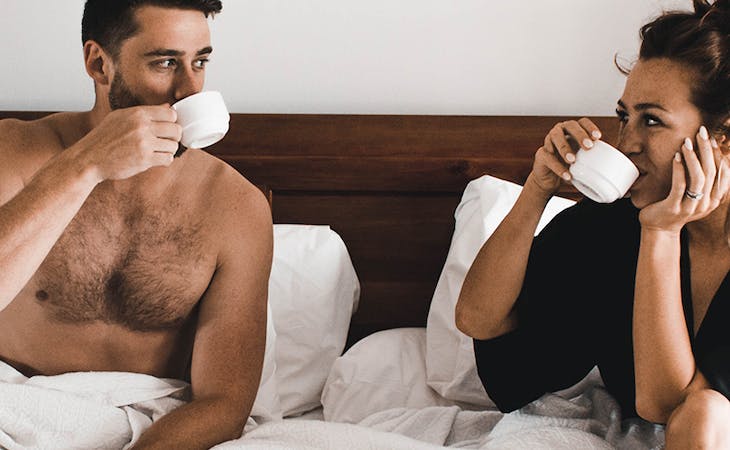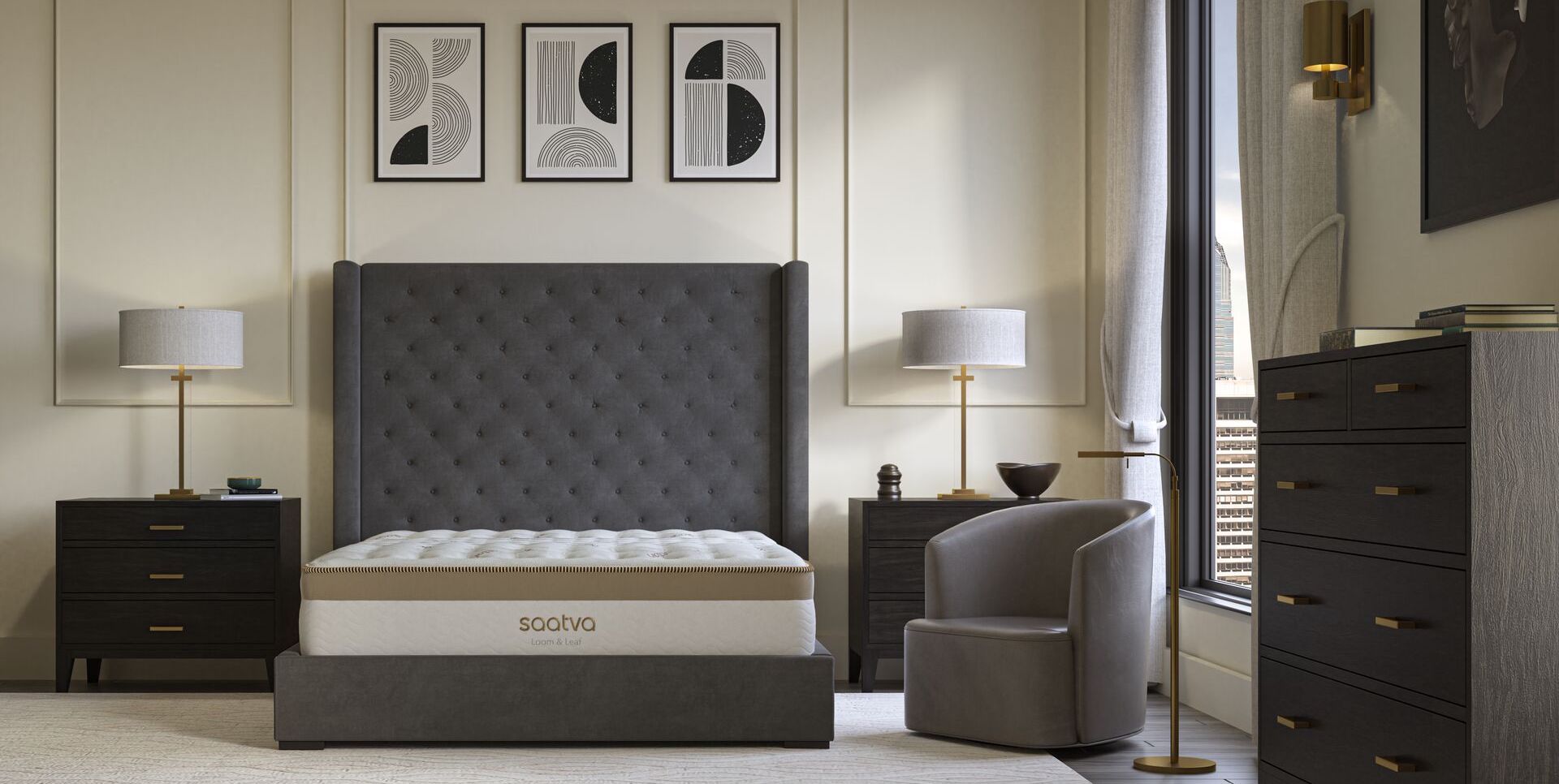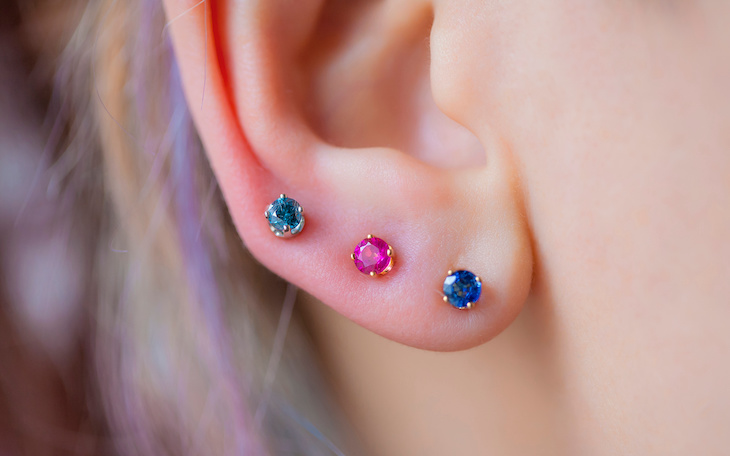When two singles first become a couple, there are many negotiations involved in knitting together their separate lives—who does the dishes and who vacuums; which set of in-laws gets Thanksgiving and which claims Christmas. But one of the most significant trade-offs, one that will affect every single night of your life together, gets surprisingly little discussion: which side is your side of the bed. In a Saatva survey, more than half of respondents said they never consciously chose which side to sleep on, and 1 in 5 said if they had it to do all over again, they would choose the opposite side.
And yet, your designated side of the bed has serious implications for the quality of your rest. “A person who is sleeping on a side that doesn’t feel right to her or him often doesn’t get a good night’s sleep,” says Paul C. Rosenblatt, a professor emeritus of Family Social Science at the University of Minnesota. Rosenblatt has probably thought about this topic more than anyone else in the world: He interviewed hundreds of couples about their bed-side choice and wrote about it in the book Two in a Bed: The Social Science of Couple Bed Sharing.
What your side of the bed says about you
Almost everybody I interviewed had a side of the bed and stayed there much of the time,” Rosenblatt says. He zeroed in on the following reasons why people tend to choose the left or the right, and what it may mean:
- Which side of the bed did you sleep on before you were a couple? If you came into your current relationship after years of sleeping solo, you may be used to lying smack in the middle of the bed, or even sleeping diagonally or spread-eagle across the entire mattress. In that case, the main adjustment is getting used to sharing your space rather than committing to a side. But if you were in another couple previously, you may prefer your familiar side.
- If you sleep on your side, do you want to face your partner or turn away? Most of the people Rosenblatt interviewed preferred to face away from their loved one; the Saatva study backs this up, with 64 percent agreeing they turn their back on their partner at night. So if you’re most comfortable sleeping on your left side, your side of the bed will most likely end up being on the right. There may also be health reasons for which side you prefer to sleep on, notes Rachel Marie E. Salas, MD, an associate professor of neurology and sleep specialist at Johns Hopkins Medicine. “Sleeping on the right side [of the body] can worsen heartburn or reflux, and pregnant women are advised to sleep on their left side for optimal blood flow.”
- Do you want to be closest to the door…just in case? Consider this preference a throwback to our primitive days, when the largest, strongest member of the family would sleep closest to the cave opening where wild animals and other marauders might sneak in. “In some heterosexual couples, the man sleeps where danger is more likely to come from—usually either closer to the bedroom door or the window,” Rosenblatt explains.
- Do you like to sleep in the heat or cold? In another case of gender preference, Rosenblatt points out that women tend to sleep closer to the radiator (though he acknowledges that his research might be skewed, since most of the couples he interviewed live in Minnesota, which has a lot of freezing nights!). If you sleep hot, on the other hand, your side of the bed will most likely end up being the side closest to the A/C.
- Who has to pee more in the middle of the night? Climbing over your partner to get to the bathroom several times a night is not going to make anyone happy, so the person who has the weakest bladder often takes the side closest to the toilet.
- Which side is closest to the kids’ room? This is one of the few cases where couples may change their sides after sleeping in a set pattern for a while, Rosenblatt explains. If you’re a new mom, your side of the bed may switch to the side where you have the easiest access to the bassinet or the baby’s room for middle-of-the-night feedings (and you may stay there as the kids get older). Rosenblatt points out that this gender stereotype can be flipped: “Sometimes in a heterosexual couple, the dad is the person who wakes up more easily, is glad to change diapers, and is glad to give the baby a bottle or bring the baby to mom to nurse, and then it’s the dad who might sleep closer to where the baby sleeps.” (Rosenblatt included same-sex couples in his research, but didn’t have a large enough sample to generalize, he says.)
- Where can you plug in? In addition to the factors Rosenblatt uncovered, sleepers in the Saatva survey added one very contemporary concern: Where is the outlet? In fact, 75% said that being close to an outlet was a key factor in choosing a side of the bed, compared with access to the bathroom (67%), window (58%), or door (48%).
Once a couple has chosen which side of the bed they prefer, switching can feel as strange as trying to write with your nondominant hand—but it can be done, especially if you move to a new home with a different layout or you have kids, say the experts. (Here’s one case where it even saved a marriage.) Other life changes can bring a new sleeping arrangement even after many decades, something I discovered recently in my own family: My parents have been married for 56 years, with my dad always sleeping on the left and my mom on the right. But about a year ago, after more than 20,000 nights in the same arrangement, they decided to switch, because my mom, who uses a walker, simply got tired of walking all the way around the foot of the bed to get to the bathroom at night.
3 tips for sharing a bed
At the beginning of the relationship, it’s important to discuss your preferences and come up with a plan that works. Rosenblatt advises couples to follow these rules:
- Be patient with the process, and be willing to experiment. It can take time to figure out the best arrangement, so try moving the bed to different spots in the bedroom and trying out each side until you come up with the configuration that works best for both of you.
- Communicate with each other respectfully, constructively, and gently. This goes for all sleeping issues, adds Salas. “Your bed partner can disrupt your sleep for many reasons—they can hog the covers, make noises like snoring, which can be disruptive to the other person, or they may want to cuddle when the other person prefers not to,” she says.
- Find a routine that works for both of you: “Almost everybody seems to sleep better if there is a routine to their going to bed and sleeping,” says Rosenblatt. As in any area of couple life, what works best for one person might not work best for the other, so part of bed sharing is compromising and accepting that some things aren’t going to be optimal for you or for your partner.”
Of course, in the extreme event that you really can’t work things out, there’s always the option of a sleep divorce.
FAQs
What side of the bed do most women sleep on?
Women who share a bed tend to sleep on the left side for safety and security. They also are more likely to sleep closer to the radiator.
What side of the bed do most men sleep on?
Men are more likely to sleep where danger is more likely to come from, usually either closer to the bedroom door or the window, for protection. This side tends to be the right side of the bed.
Shopping for a new mattress with your mate? Here are some helpful mattress-buying tips for couples.











